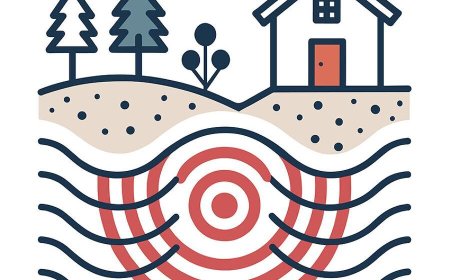Tides Facts for Students | Water and Ocean Guide
Learn what tides are how the moon and sun cause them why they are important for oceans coasts and people in this clear student friendly guide
🌟 Introduction
Tides are the regular rise and fall of ocean water levels along coastlines. They happen because of the pull of gravity from the moon and the sun on Earth's oceans. Twice a day, the water level rises to high tide and falls to low tide, creating a natural rhythm that affects beaches, harbors, and marine life. Tides are powerful forces that shape coastlines, create tidal pools, and influence human activities like fishing, boating, and shipping. Understanding tides helps us see how space and Earth are connected through the movement of water.
🔍 Understanding Tides
Tides are caused mainly by the gravitational pull of the moon, with some influence from the sun. As the moon pulls on Earth's oceans, the water bulges out in the direction of the moon, creating high tide. On the opposite side of Earth, another high tide occurs due to Earth's rotation. Between these bulges, low tide happens.
-
High Tide - When water levels are at their highest.
-
Low Tide - When water levels are at their lowest.
-
Spring Tide - Extra high tides that occur when the sun, moon, and Earth line up.
-
Neap Tide - Lower high tides that happen when the sun and moon pull at right angles.
🌍 Why Is It Important?
Tides are important because they:
-
Support coastal ecosystems, like tide pools where unique animals live.
-
Help navigation, allowing ships to safely enter and leave harbors.
-
Provide energy, with tidal power plants creating renewable electricity.
-
Shape coastlines, moving sand and sediments along beaches.
-
Affect fishing and farming, since some seafood harvesting depends on tides.
🧪 Real-Life Connections
-
Beachgoers notice tides when the shoreline changes between morning and afternoon.
-
Fishermen often plan their trips around the best tides for catching fish.
-
Coastal farmers use tidal flows in certain areas to water rice fields.
-
Scientists study tides to protect coastal towns from flooding.
-
Tidal energy projects use the movement of tides to create clean electricity.
✨ Interesting Facts
-
The Bay of Fundy in Canada has the world's highest tides-over 50 feet difference between high and low tide.
-
Some places experience only one high tide and one low tide per day, called a diurnal tide.
-
The moon influences tides more than the sun, even though the sun is much bigger, because it is closer to Earth.
-
Ancient sailors used tidal knowledge to plan safe journeys.
📌 Key Takeaways
-
Tides are the daily rise and fall of ocean water caused by the moon and sun.
-
They affect ecosystems, transportation, and even energy production.
-
Understanding tides helps people and nature live with the ocean's rhythm.
🐾 Kid-Friendly Summary
Tides are the ocean's daily heartbeat, rising and falling because of the moon's pull. They change beaches, help boats, feed animals, and even create clean energy.
📚 Vocabulary Words
-
Tide - The regular rise and fall of ocean water levels.
-
High Tide - The highest water level during the tidal cycle.
-
Low Tide - The lowest water level during the tidal cycle.
-
Spring Tide - The highest tides, caused when the sun, moon, and Earth line up.
-
Neap Tide - Lower high tides, caused when the sun and moon pull at right angles.
-
Gravity - The force that pulls objects toward one another.
-
Tidal Energy - Electricity made by harnessing the power of tides.
-
Tide Pool - A shallow pool left behind on shore at low tide.
Interactive Quiz: Tides
Instructions: Choose the best answer. Answers are listed at the end.
-
What causes tides on Earth?
A) Earthquakes
B) Gravity from the moon and sun
C) Winds
D) Volcanoes -
What do we call the highest water level in a tidal cycle?
A) Low tide
B) High tide
C) Spring tide
D) Neap tide -
Which place has the highest tides in the world?
A) Gulf of Mexico
B) Bay of Fundy
C) Pacific Ocean
D) Great Lakes -
What is tidal energy?
A) Power from sunlight
B) Electricity made from moving tides
C) Heat from volcanoes
D) Energy from wind -
What is a spring tide?
A) A tide that happens only in spring
B) An extra high tide caused when the sun, moon, and Earth line up
C) A tide caused by rainwater in rivers
D) A tide found only near mountains




















































